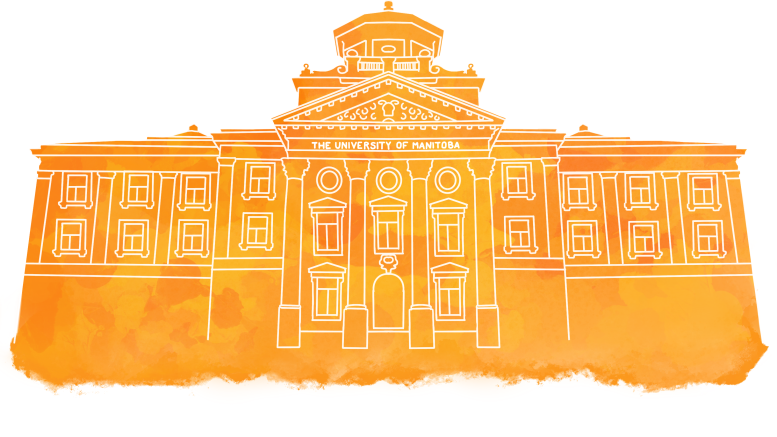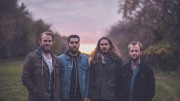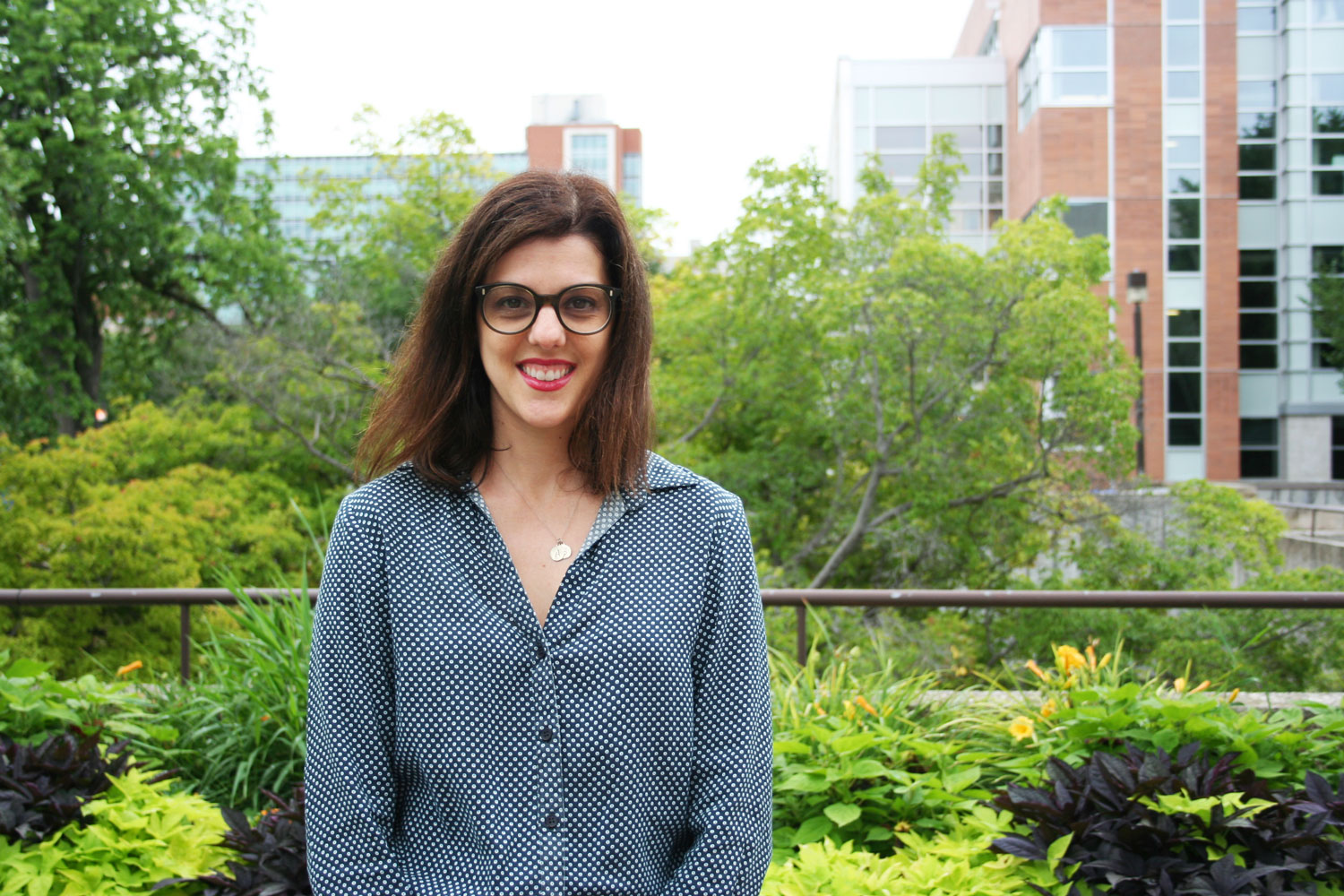“Anishinaabe of Treaty 3, 55,000 square miles, signed in 1873.” Lorraine Seymour knows the details of her home by heart.
Sitting on a rock outside the National Centre for Truth and Reconciliation building on a warm June day, the 63-year-old U of M graduate spoke of privilege. Her experience in Canada has been one of ongoing genocide.
“I feel tired,” she said. “It’s in my body.”
Seymour is a survivor of the Indian Residential Schools system, which the Truth and Reconciliation Commission of Canada concluded was a “systematic, government-sponsored attempt to destroy Aboriginal cultures and languages and to assimilate Aboriginal peoples so that they no longer existed as distinct peoples.”
Her Indigenous identity influences every part of her life. “It has to be the first thing,” she said. Despite the Canadian government’s attempts at cultural genocide, Seymour “learned how to thrive.” She worked hard to move past negative thinking, her biggest hurdle. She shifted the narrative from focusing on the racism and abuse she endured to the fact that she’s still here, and she just graduated with her master’s degree.
This past May, Seymour graduated with her master of social work — Indigenous knowledges (MSW—IK). Her path to her master’s was not linear. After graduating with a bachelor’s degree in what was then called native studies from Trent University, Seymour practised social work for over two decades, looking at the practice “through a lens of the colonized.”
Executed through a western lens, social work policies are “ineffective right off the top,” Seymour explained. Her goal is to get past the “wall of white fragility,” another tool for cultural genocide.
To get there, Seymour had always seen the power in education, and had always wanted a master’s degree. The idea had been instilled in her from childhood by her family. As a child, she needed to overcome the racism in Kenora, Ont., schools, but her family always reminded her that education is “the key.”
Working on the front lines in child welfare, Seymour found that she had no power. “I was just being directed to do harmful things according to policy,” she said.
As she worked, she knew she wanted to get an MSW to change policy herself.
However, after a long pause, Seymour said she isn’t really happy that she went to the U of M for her degree.
“I’m glad I got my degree, but I think they could’ve done better, and I think there’s other universities that do better,” she said. After having started with her pre-masters at the university, Seymour said she felt “shackled,” like she couldn’t take it anywhere else. One support that improved her experience, however, was the presence of the Knowledge Keepers at the U of M.
The Elders and Knowledge Keepers support students, staff and faculty on campus and the MSW-IK program has its own Knowledge Holders. The Knowledge Holders in the program can call back to the teachings their ancestors once practised, and share that knowledge with students in the program as they learn more about how to work in the field while understanding and incorporating Indigenous perspectives.
“I can’t even describe, there’s so much knowledge,” said Seymour.
Surviving residential school impacted the way that Seymour views education today. Sometimes she would encounter triggers on campus and be transported back to the brick hallway she walked as a child. She said that being able to smudge everywhere would help with this, but because a classmate claimed to be allergic to sage, she was unable to, even in her Indigenous social work classrooms. The inability to smudge in class was what began to make her feel uncomfortable, she said.
After that, Seymour finished the first year and wanted to leave, but she couldn’t take the pre-masters into a different program at another school.
‘Part of a journey’
Cary Miller, U of M associate vice-president Indigenous: curriculum, scholarship and research, pointed to the complications that come with accommodating the need for smudging while operating as a bureaucracy. There are designated smudging spaces on campus, and any student who wishes to smudge as part of their class can submit a request to their teacher, who can submit it to building administration.
While Miller was head of Indigenous studies at the U of M, the department’s offices replaced its smoke detectors with heat detectors to accommodate smudging while still adhering to fire safety protocols.
Miller found that throughout her career as an Indigenous academic and historian, universities she attended and worked at often offered very little Indigenous content. Her thinking after she graduated with her first degree was that she could go to graduate school and bring Indigenous history to these institutions, because “we have a right to be here,” she said.
“Truth comes before reconciliation,” she said, “and so in some ways, there are few things that we can do to support reconciliation more than telling the truth.”
When Miller was hired to teach at the University of Wisconsin-Milwaukee in 2002, she was one of the few people with degrees in Indigenous history she knew of whose teaching load consisted entirely of Indigenous content, but she found that it was more of a “checked our box” situation for the university. When she asked to teach graduate level courses on Indigenous content, she was told that students wouldn’t be interested in learning about Indigenous history.
Miller came to Canada because she wanted to teach at an institution that would take issues like reconciliation seriously. As of this year, 500 U of M faculty and staff have voluntarily signed up for the Summer Institute, a 12-week course on Indigenous content literacy. She compares this with her past experiences at other universities, and she has “an incredible amount of hope.”
She said one reason Indigenous academics may feel uncomfortable at universities is that they are based on European models, not models informed by other cultures around the world.
Indigenous peoples might say that “the land is our greatest teacher,” she said.
“When we are removed from the land in a square box with no windows, what kind of teaching are we getting?”
The U of M has taken steps toward reconciliation in the past, but Miller said that, being a large university, making those changes can be difficult. “It takes a lot of effort, it happens very slowly, and it happens very carefully,” she said.
So far, the office of the vice-president Indigenous has created five Indigenous faculty seats on the senate, the Summer Institute has been established, and some faculties have implemented an Indigenous content requirement (ICR). Now, Miller is working on a reconciliation action plan that will address the current missing pieces.
She reported that, hopefully, her office will be bringing on an Indigenous faculty support co-ordinator by the end of the summer. The office is also aiming to hire a director of Indigenous research that will act as the connection between the U of M and communities.
The plan is based in the Truth and Reconciliation Commission’s (TRC) calls to action, particularly concerning education. This involves bringing more Indigenous knowledge and content to curriculums in general. A consultation with communities is also in development concerning policy for repatriation of ancestral remains.
Ultimately, reconciliation cannot be limited to a five-to-eight-year action plan. Those plans are important because they set priorities, said Miller, but in Manitoba, priorities will need to be continually set to build relationships with Indigenous communities. Unpacking the 150 years that have led us to this point, all the policies, laws and procedures, “is going to take at least a generation, maybe two or three.”
“Reconciliation is a commitment to [living] a particular way, to walking a particular path that isn’t going to come to an abrupt end in five or eight years,” she said.
“We’ll have completed part of a journey, but we’ll be able to see where that road leads and plan then for the next steps in that journey.”
Overall, Miller thinks the U of M is doing well on this front. While the university is behind other Canadian universities in some areas, like having an ICR for all degree programs, it is ahead in others. The U of M is actively working to put more Indigenous voices in senior leadership positions, and Miller reported that it currently has over 50 Indigenous faculty members and is constantly hiring, which is more than most U15 universities.
“While I know that we haven’t created as safe a learning environment for our students as we hope to, it is miles better than it used to be,” she said.
“It’s miles better than what I had experienced, and there are so many more supports and so many more Indigenous faculty to look up to and take classes from.”
Learning in a colonial space
Nearly one-fifth of Manitoba’s entire population is Indigenous, and the province has the highest Indigenous population proportionally out of any province.
“I often say to folks that this means every graduate is going to encounter one out of every five of their clients, patients, customers, coworkers, bosses [who] may be Indigenous,” said Miller.
This also means the U of M has a special responsibility when it comes to reconciliation. University of Manitoba Indigenous Students’ Association (UMISA) co-cultural co-ordinator Kayla Shaganash believes that institutions in Manitoba should be “the ones to pave the path for every other institution.”
“There are small tiny movements,” she said, “but there are a lot of large movements that end up taking us back.”
Shaganash works in archives and collections in the anthropology department, and reported that one step forward is the repatriation of ancestors and sacred items being housed at the U of M. In the 2021-22 academic year, the university’s Indigenous Initiatives Fund gave $60,000 to professors in the anthropology department for their project focused on honouring ancestors, belongings of Indigenous communities and other Indigenous material that is held in university archaeology labs as part of a Respectful Repatriation Ceremony.
Shaganash’s experience at the U of M has been heavily influenced by colonialism. She faced academic barriers that she attributes to intergenerational trauma, but her mentors advocated for her and kept her afloat.
The timeframe of a four-year degree is often unfeasible for many Indigenous students, especially those coming from the reserve, said UMSU Indigenous students’ rep Ishkode Catcheway, who came to Winnipeg from a reserve herself.
Every day, she says to herself, “these institutions were never meant for Indigenous people to be in.”
“They were never meant for us, to be walking in these halls, to have a building, to have programs.” Now, Catcheway plans to enter medical school after she graduates next year, with the goal of eventually practising medicine where she grew up.
That’s why Catcheway and Shaganash went into student politics in the first place — even within UMSU, Catcheway sees the institutional problems.
“I argue every single day in those board of directors meetings,” she said.
“I argue a lot. Part of being Indigenous is arguing and sticking up for yourself and using your voice.”
The reality for the two is that it’s up to them to “be the ones to make that change and to raise our voices,” said Shaganash.
Like Seymour, Shaganash’s family always talked about post-secondary education. But while Seymour emphasized the importance of thriving as an Indigenous person, Shaganash said her community in Thompson, Man., wasn’t doing so. For her, going to university always comes back to helping her community.
While she doesn’t always feel like she fits into the institution, “I’m going to make space for myself here,” she said.
“The reason I’m in university is to face these issues and to have these difficult conversations head on, and not be taken down by them the way I was before.”
Catcheway doesn’t believe that the U of M is a safe space for Indigenous students. While she herself has only experienced racism on campus once, she knows that the experience is all too familiar for many Indigenous students.
She and Shaganash both believe the community at large would benefit from an ICR for all students.
“The longer we prevent this from happening, the more instances like this [are] going to happen, and then we’re not going to be doing anything to move forward in reconciliation,” she said.
One thing that both Shaganash and Catcheway have found troubling throughout their time at university is being unable to cite oral teachings and traditional knowledge in papers they write. Catcheway referred to an Indigenous studies course in her first year. She wanted to use information passed down from her grandmother and mother in an assignment, but she couldn’t include it because she couldn’t cite it.
“That’s a big barrier we all face as Indigenous scholars,” said Shaganash.
Miller recommends Chicago citation styles in her courses for students who wish to cite traditional knowledge, which detail how to cite personal interviews and communications, as well as lecture citations which can be applied to situations such as an Elder giving a public presentation or speaking before a community group.
When used in research that may be published, students must obtain informed consent from any person they intend to quote through an “ethics approval” process, which Miller said is one reason why students may not be able to use knowledge passed down to them. This was implemented to address research practices that worked to exploit Indigenous knowledge. If the university doesn’t follow these guidelines, it may jeopardize its federal research funding.
Miller said that Indigenous communities support asking researchers to file ethics applications and follow procedures outlined. This applies to dissertations and theses at the graduate level, but it could also be required for senior theses and some undergraduate projects.
Research that works alongside communities rather than “on communities” is essential when thinking about a university’s path to reconciliation, said Miller.
Learning as a community
Shaganash and Catcheway emphasized the importance of community-based learning. While that isn’t happening right now, both believe that it’s possible to achieve. Migizii Agamik already does it.
Catcheway, Shaganash and Seymour are some of many Indigenous students who have used supports provided by the Indigenous Student Centre (ISC) and Migizii, the building that the centre works out of.
“We all used Migizii as a community,” said Seymour.
ISC director Carla Loewen said the centre is for all Indigenous students, “whoever finds our doors.”
There are five student advisors working at the ISC, and Loewen said that each advisor works with roughly 100 students every year.
Some students will see an advisor once and never come back, and some will come often throughout their time at the U of M. Once students find Migizii and the ISC, Loewen said they often call it “their home away from home.”
Addressing the fact that she and her team work within a colonial environment, Loewen said the centre always works to “support the whole student,” taking into account their mental, emotional, spiritual and physical wellbeing in programming, advising and other supports. Students are also able to smudge in Migizii.
“Everybody who comes here often says they feel relief when they’re in here because they can tell that they’re with people who understand,” said Loewen.
Learning from the land
Education does not just exist in one form. It goes far beyond what is taught in universities. Seymour keeps a small beaded tobacco pipe like the one that she would have received around the time she was taken into the residential school system. The pipe “will teach you how to be, to live a good life,” she said. The pipe helps her to hold on to her identity.
Her life’s journey, she said, is helping people access and reconnect with their identity and their cultural attachments, much like how the pipe helps her make sense of things. Her master’s thesis centred around beading as healing, making connections with research participants struggling with their identity and culture. The main project was supposed to take 12 weeks, but it lasted four seasons instead.
Seymour said the project took her to the land. It all comes back to the land, because “that land is your family,” despite attempts to exploit and colonize it.
On that warm June day, Seymour spoke of the water as the river flowed, and as she did, it began to rain.
“Look at the water,” she said. “It’s alive, but it belongs to somebody. How is that even real?”
Her daughter, a Robson Hall graduate, fights for that water and its rights.
“Accept my culture, you accept me,” she said. “You don’t accept my culture, I’m not in a safe space.”
“That includes U of M. They need to do better.”




